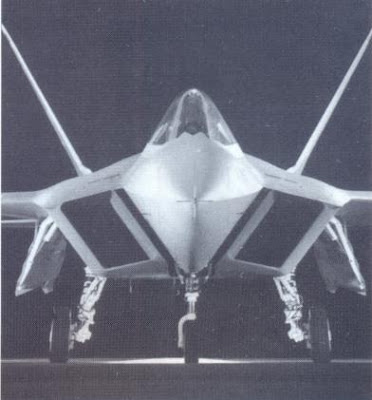The Lockheed Martin F-22 Raptor is an all-weather, stealth fighter in service with the US Air Force since 2005. Right from the very start, this air superiority combat aircraft showed excellent performance and an amazing agility for its size. When it was introduced, it represented a great technological leap in fighter design, incorporating the latest radar-evading stealth technology. It also featured great maneuverability at extreme angles of attack. Each F-22 cost 150 million dollars to produce as Lockheed Martin and Boeing built a total of 195 Raptors.
The YF-22 prototype made its maiden flight on September 29, 1997. It was powered by two specially designed Pratt & Whitney F119 low-bypass turbofan engines, which provided 35,000 pounds of thrust. Despite the initial satisfactory performance, the flight tests phase would last eight years as it finally entered service with the US Air Force on December 15, 2005, as the F-22A. When it was introduced, it was virtually invisible to all types of ground radar. Today, its updated fly-by-wire control system and color head-up display gives the pilot all the electronic assistance currently available.
Since its introduction, the F-22 Raptor has usually been deployed to the US Air Force's Kadena airbase, on the island of Okinawa, Japan. This fifth generation fighter aircraft first saw combat action on September 22, 2014, flying sorties during Operation Inherent Result, which was the military operation during the Syrian Civil War. The fighter dropped 1,000-lb, GPS-guided bombs on the Islamic State targets near Tishrin Dam. Today, as of June 2025, it has just been deployed to the Middle East to help Israel destroy the purported Iranian uranium enrichment plants and nuclear program sites.
 |
| Above, the F-22A in flight around 2010. |
Technical Description
The Lockheed Martin F-22 Raptor is a fifth generation, two-engine, stealth monoplane. It features a trapezoidal mid-wing design, which gives the aircraft outstanding flight performance. The airframe is made of titanium and steel. The all-metal fuselage is coated in radar-absorbing material to increase its stealthiness. The front view of aircraft shows diamond shapes; the front fuselage, intakes, and the tail vertical fins share the same 48-degree angle, deflecting and absorbing enemy radar waves and making the fighter very difficult to detect.
The F-22 Raptor's amazing maneuverability is achieved by computer-controlled ailerons, flaps, tailplane elevators, and fin rudders, which combine with the engines' thrust-vectoring nozzles. For maximum stealth, the aircraft carries the bombs and missiles in a bomb-bay in lower fuselage. The Raptor has retractable, tricycle landing gear. The aircraft is equipped with a Westinghouse AN/APG-77, which is a solid-state, active, electronically-scanned array radar.
Specifications
Type: fifth generation stealth fighter aircraft
Length: 19 m (62 feet, 6 inches)
Wing Span: 13.56 m (44 feet, 6 inches)
Wing Area: 78 m2 (840 square feet)
Height: 5.39 m (17 feet, 8 inches)
Power Plant: two 35,030-lb-thrust, Pratt & Whitney F119-PW-100 turbofan engines, with thrust-vectoring jet nozzles.
Maximum Speed: Mach 2.25 (2,414 km/h or 1,500 mph) at altitude; Mach 1.21 at sea level.
Combat Range: 850 km (530 miles)
Crew: one
Armament: one 20-mm M61A1 Vulcan cannon with 500 rounds; four AIM-9M Sidewinder or AIM-120 AMRAAM air-to-air missiles; four GBU-39 Small Diameter bombs.
 |
| Front view of the Raptor showing its diamond-shaped air intakes and fuselage. |
 |
| Above, the prototype YF-22 in 1998, during a flight test. |


